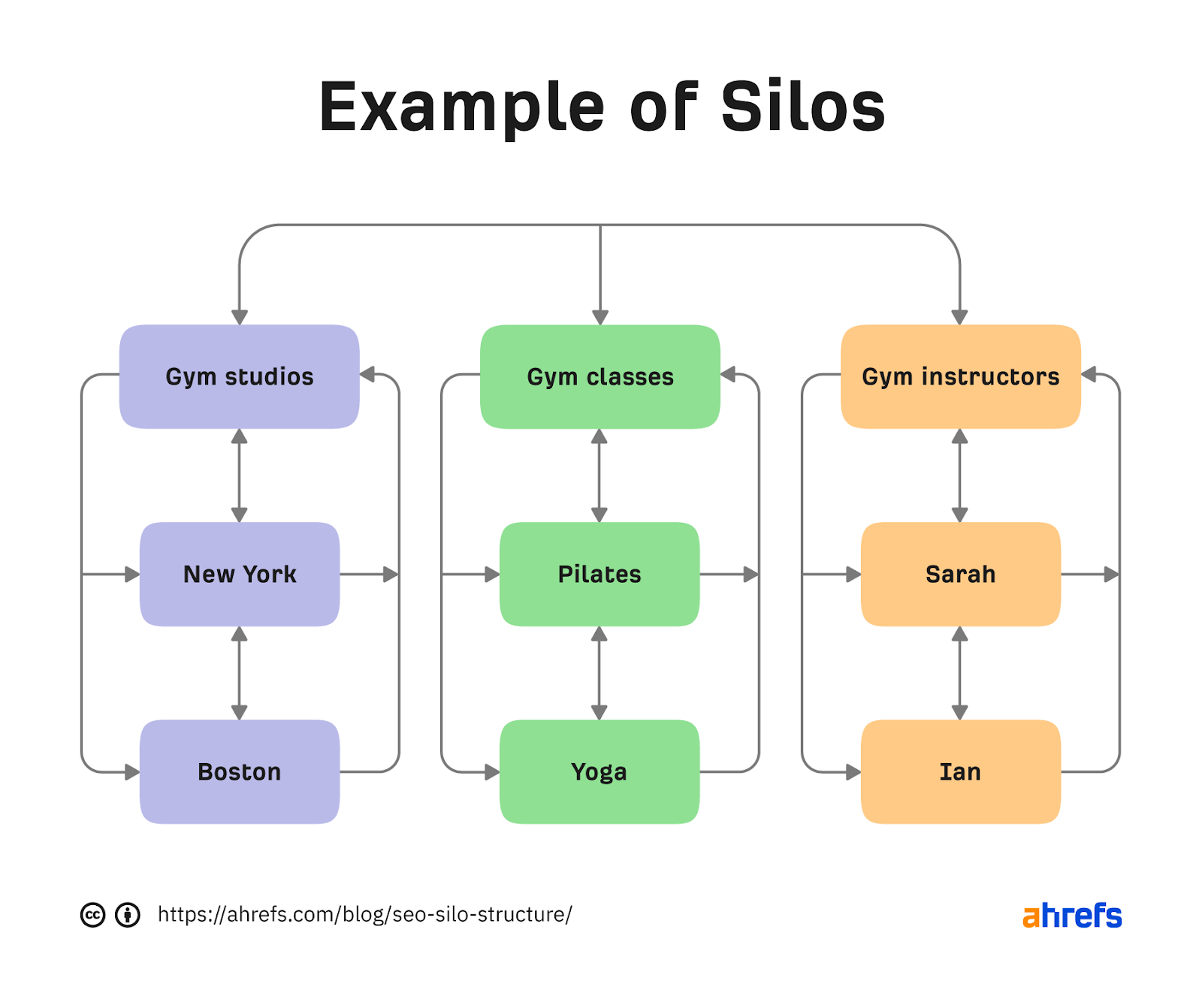Silo Structure: The Foundation of SEO Architecture

Silo Structure is a cornerstone of effective SEO. By compartmentalizing content, it streamlines the user journey while making websites more search engine-friendly.
What is Silo Structure?
Contents
Silo Structure is an SEO technique that organizes related information into distinct categories or “silos”. This strategy is not merely about clustering content but about ensuring clarity and focus on individual topics. By segmenting content in this manner, search engines can more precisely ascertain the context and relevance of each page. This clarity is mirrored for users, who can then navigate the website with ease, understanding the overarching themes and how different content pieces interrelate.

ahrefs silo structure guide
The Importance of Organized Content
Structured content is pivotal for several reasons. Search engines are designed to reward clarity. When a site’s content follows a clear pattern or hierarchy, it signals to search engines like Google that the content is well-organized, which can lead to better indexing. For users, a logically structured website translates to a better browsing experience. It reduces the cognitive load, helping them locate information without unnecessary hurdles. Furthermore, a well-organized content framework aids in link-building, both external and internal, thereby amplifying the SEO impact.
Benefits of Implementing a Silo Structure
Silo Structure offers multifaceted benefits. For one, it streamlines the crawling process for search engines. An organized website is simpler to crawl, index, and subsequently rank. From a user standpoint, a siloed website promotes intuitive navigation. It groups related content, helping users delve deeper into subjects of interest, which can enhance engagement metrics like session duration. A direct SEO advantage is the bolstered topic authority. When content on a specific topic is grouped and interlinked, it accentuates the website’s authority on that subject in the eyes of search engines.
Steps to Set Up an Effective Silo Structure
- Content Grouping: Begin by identifying major themes within your content. Group related topics and ensure each silo focuses on a distinct theme.
- Internal Linking: Links serve as pathways within silos. Ensure that pages within a silo are interlinked, reinforcing the theme and making navigation seamless.
- URL Clarity: URLs should be descriptive and reflect the silo hierarchy. For example, “website.com/silo-topic/content-page”. Breadcrumbs, hierarchical navigation elements, can also be added to enhance user navigation and reinforce content structure.
Common Mistakes to Avoid
While Silo Structure can be transformative, missteps can hinder its effectiveness. Over-complication is a frequent error. Instead of aiding users, an overly complex structure can confuse them. Inconsistent internal linking can also derail the strategy. For instance, if pages from disparate silos are frequently interlinked, it can dilute the thematic clarity. Another oversight is the stagnation of the structure. As content is added or modified, the silo structure should adapt to ensure it remains relevant and effective.
Conclusion
In the realm of SEO, Silo Structure stands out as a fundamental yet potent tool. By diligently organizing content and adhering to best practices, websites can enhance both user experience and search visibility. Periodic evaluations and adjustments ensure the structure remains apt and powerful.